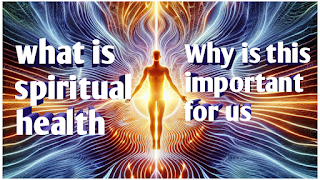Procedure of siddhasana
Siddhasana is a seated yoga asana (pose) that is often practiced in meditation and pranayama (breath control) practices.
Here's a step-by-step guide to help you practice Siddhasana correctly--
Preparatory steps
1. Sit on the floor with your back straight, using a mat or any other support that feels comfortable.
2. Place your right hand on your right knee.
Entering into Siddhasana
1. Cross your right leg over your left thigh, so that your right ankle is resting in the groove between your left thigh and knee.
2. Place the sole of your right foot against your perineum (the region between the anus and the genitals).
3. Keep your left leg straight and your left foot as close to your body as possible.
Adjustments and final posture
1. Press your left heel into the ground and lift your left knee, keeping your left leg straight.
2. You should feel a gentle pressure on your perineum as the sole of your right foot presses against it.
3. Engage your abdominal muscles to support your lower back and maintain good posture.
4. Close your eyes, take a few deep breaths, and feel the tranquility of this seated pose.
Key considerations
If you experience any discomfort or strain in your back, legs, or hips, modify the pose by adjusting the position of your legs or using additional support.
If you have any underlying medical conditions, consult with your healthcare provider or a qualified yoga instructor before practicing Siddhasana or any other yoga asana.
Benefits of Siddhasana
Siddhasana, also known as the "accomplished pose" or "perfect pose," is a seated yoga asana that offers several benefits for the body, mind, and spirit.
Here are some of the benefits of practicing Siddhasana--
Physical Benefits
1. Stress relief and relaxation
The pose helps to calm the nervous system, reducing stress and anxiety.
2. Improved digestion
The seated position and the movement of the intestines can help stimulate digestion and alleviate symptoms of indigestion and constipation.
3. Relief from menstrual cramps
Siddhasana may help ease menstrual cramps and other symptoms associated with PMS.
4. Strengthens the pelvic floor muscles
The pose can help tone the pelvic floor muscles, which can improve bladder control and reduce symptoms of incontinence.
5. Improves flexibility and posture
Regular practice of Siddhasana can help increase flexibility in the hips, legs, and back, and improve overall posture.
Spiritual Benefits
1. Meditation and focus
The pose is often associated with meditation, as it allows the practitioner to sit comfortably and focus their mind.
2. Connection to the third chakra
Siddhasana is said to be connected to the third chakra, or navel center, which is associated with personal power, self-esteem, and creativity.
3. Prana (life force) balance
The pose is believed to help balance the prana, or life force, which can improve overall health and well-being.
Other Benefits
1. Helps with jet lag
The pose can help the body adjust to changes in time zones and reduce symptoms of jet lag.
2. Prepares for deeper meditation
Siddhasana can help prepare the body and mind for deeper levels of meditation and spiritual practice.
3. Supports spiritual growth
The pose is often used as a preparation for spiritual practices, such as introspection, self-reflection, and connection with the divine.
4. Improves yoga performance
Siddhasana can help improve balance, stability, and overall yoga performance.
5. Increases focus and concentration
Regular practice of Siddhasana can help improve focus and concentration, which can benefit daily activities and tasks.
As with any yoga practice, it's essential to listen to your body and modify or avoid the pose if you experience any discomfort or pain. Consult with a qualified yoga instructor or healthcare professional for guidance and support.
Precautions in siddhashna
Siddhashna is a concept in Hinduism that refers to the state of enlightenment or spiritual awakening. There are certain precautions that one should take when attempting to attain this state, some of which include--
Secrecy about spiritual awakening and attainment of siddhatva, consultaion with spiritual teacher or guru, gradual spiritual growth to attain siddhashna, detachment from worldly affairs and wealth, disciplined life to follow righteous deeds, self-awareness and introspection, listening and learning from people who have attained enlightenment or self-realization, trust in eternal, omnipresent, omniscient divine knowledge or Brahman, maintaining a club of spiritual seekers from similar way of life and values, complete faith and faithfulness to a guru for continuous guidance.
These precautions are meant to help one to maintain a high level of awareness and spiritual growth while attracting less negative energy or distractions and to avoid self-erosion and god-forfeiting.
















